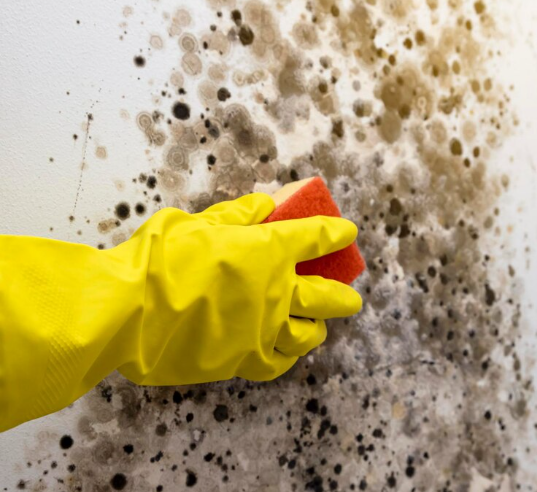Keeping your home or building safe from damp spots is very important. If wet areas are left untreated, they can cause serious damage to walls, ceilings, and even your health. People living in older houses or places with poor air flow often face this issue. That’s why Mould remediation in Kitchener is so important. When moisture collects in hidden corners, it creates the perfect setting for fungi to grow. These dark spots often go unnoticed until they spread widely. To keep your living space fresh and safe, it’s best to fix these problems early. Professionals who handle such tasks use special tools and follow safe steps to clear up the issue and stop it from coming back. This article will help you understand everything from what causes it to how it can be removed and kept from returning.
Where Moisture Problems Begin
Fungal growth usually starts when water collects in places where it shouldn’t. Leaky roofs, pipes, or basement flooding are common causes. But even small problems, like steam from a shower with no vent, can lead to trouble. Here are a few areas where trouble often begins:
- Bathrooms: Steam from showers and poor air flow make them easy targets.
- Kitchens: Leaks under sinks and heat from cooking can cause damp spots.
- Basements: These areas are often dark and damp, making them perfect for unwanted growth.
- Attics: Poor air movement and roof leaks make these spaces risky.
- Air Systems: Vents and ducts can carry spores around if not cleaned.
Each of these areas needs attention. Regular checks and repairs help lower the risk of problems starting.
What This Growth Does to Your Health
When wet spots allow fungi to grow, they don’t just harm walls and floors. They also harm the people living nearby. Breathing in tiny spores can cause many problems, especially for kids, older people, or anyone with breathing troubles. Here’s how it can affect your body:
- Irritation: Eyes, nose, and throat may feel itchy or dry.
- Coughing and Sneezing: People may start to cough more or have runny noses.
- Asthma Issues: Those who already have asthma might feel worse.
- Skin Problems: It can also cause rashes or dry skin.
These signs often get better when the area is cleaned and dried. That’s why fixing the issue early is not just good for your house, but for your health too.
How Experts Handle the Cleanup
Clearing up damp damage is not as simple as wiping a surface. Experts follow a step-by-step method to do it the right way and stop the issue from coming back. This is what they usually do:
- Step 1: Clean the Area – They begin by removing any material that is too damaged to save.
- Step 2: Block the Area – Sheets and barriers are used to stop spores from spreading.
- Step 3: Dry Everything – Big fans and air machines are used to dry the space fully.
- Step 4: Fix the Cause – They look for leaks or other sources of water and repair them.
- Step 5: Final Check – The last step includes checking air and surfaces to confirm the space is clean.
This method keeps your space safe and makes sure the problem doesn’t come back soon.
How to Stop the Problem from Returning
Once the area has been cleaned, it’s important to keep it that way. Prevention is the best way to stay free from this trouble. These simple steps can help:
- Fix Water Problems Fast: Don’t wait to fix leaks, even small ones.
- Use Fans: Exhaust fans in kitchens and bathrooms help a lot.
- Keep Air Moving: Open windows and use fans to move air around.
- Check Often: Look behind furniture and in corners for early signs.
- Use Better Building Items: Some paints and boards are made to fight against damp issues.
Doing these things helps make your home or building safer and more comfortable.
How Big the Damage Can Be
Experts often look at the size of the area that needs to be cleaned. This helps them decide how to go about fixing it. There are three levels:
- Small: Under 10 square feet, like a bathroom corner.
- Medium: Between 10 and 100 square feet, like under kitchen floors.
- Large: Over 100 square feet, often in basements or attics.
Knowing how big the problem is helps the team use the right tools and steps.
The Hidden Areas Most People Miss
Many people think only bathrooms or basements have moisture problems. But there are other hidden spots you should check:
- Behind Walls: Pipes may leak without being noticed.
- Under Floors: Spills or leaks may go under carpets or wood.
- Inside Ceilings: Roof leaks can stay hidden for a long time.
- In Storage Areas: Boxes and bins can trap dampness.
It’s a smart idea to check these places from time to time.
Simple Tools That Help Keep You Safe
You don’t always need big machines to keep dampness away. Some small items can help a lot:
- Humidity Meters: These tools show how wet the air is. Aim for under 60%.
- Dehumidifiers: They remove extra water from the air.
- Air Filters: These catch spores and clean the air.
Using simple tools can stop big problems from starting.
Take Action Before It Spreads
Don’t wait for things to get worse. If you think your home has a problem, act early. Safe air and dry walls make your home feel better for everyone.
If you are facing issues with dark spots, strange smells, or damp air, it’s time to investigate Mould remediation in Kitchener. Acting early can protect your health and save your home from big repairs. Call the helpful team at MSN Enviornmental today and breathe better tomorrow.
